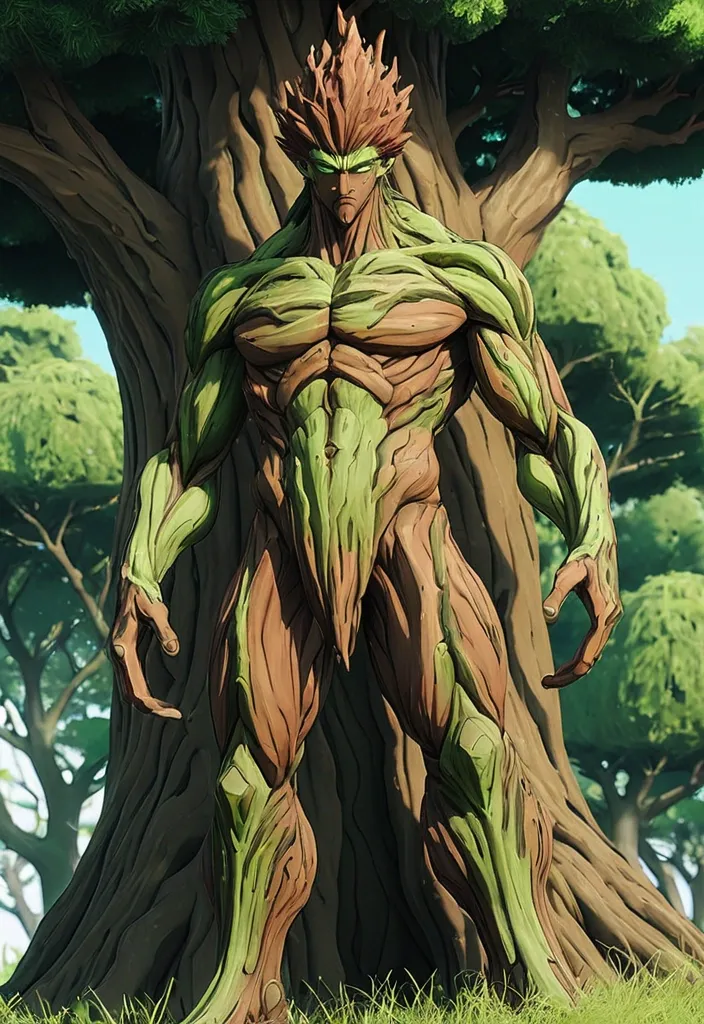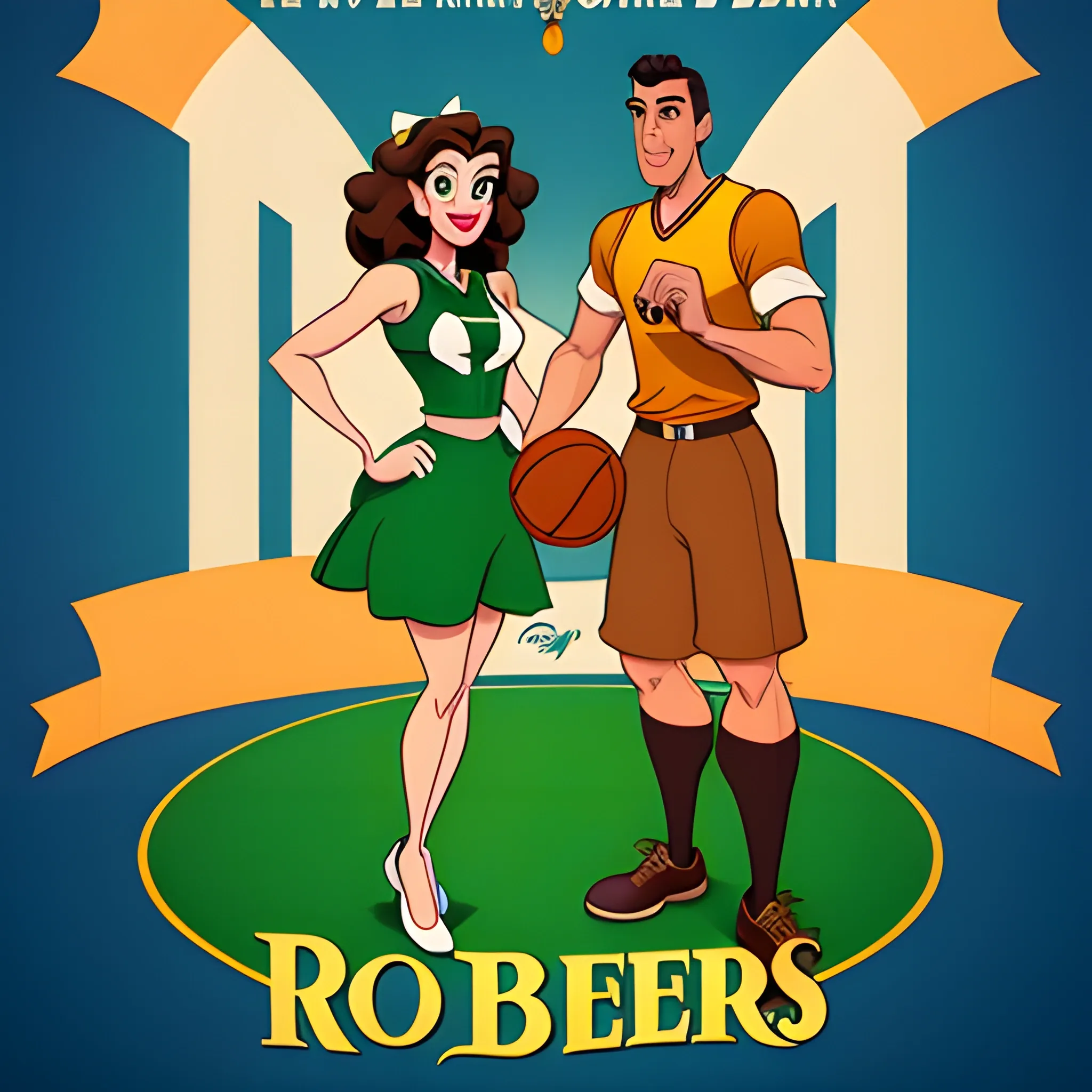Search Results for brown and green
Explore AI generated designs, images, art and prompts by top community artists and designers.
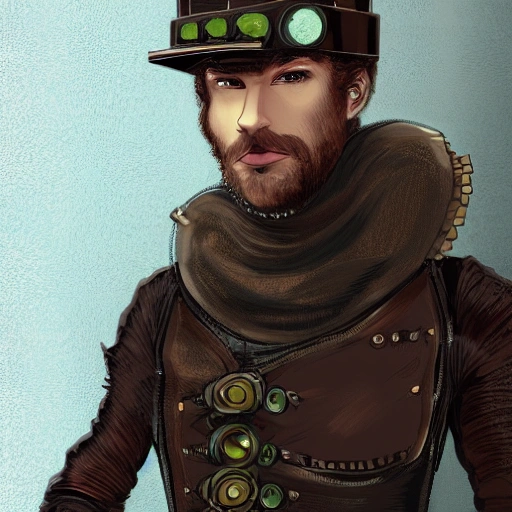
steampunk helmet fantasy art of a young man with curly black hair pulled back in a bun , brown and green eyes , short scruffy black beard , dressed in a black turtleneck jumper , ordering coffee in a coffee shop , in autumn , in a dystopian bladerunner future. digital painting artstation concept art. ,

Designing a coffee bag from Páramo de Santander , Colombia , will require a logo and background that reflects the beauty and uniqueness of this region and its coffee. Here is a description of a possible design: Logo: Central icon: Use a central design that represents a mountain with a coffee plantation at its base. This symbolizes the location in the Páramo de Santander and the production of coffee. Nature: Surround the mountains and the coffee plantation with elements of the flora and fauna of the moor , such as birds , wild flowers and typical vegetation. This highlights the rich biodiversity of the region. Colors: Use a color palette that represents the nature and climate of the region. Shades of green for vegetation and blue for the sky and bodies of water may be appropriate. You can also incorporate brown and green tones to represent ripe coffee beans. Typography: Choose a rustic or artisan style font for your cafe's name. This evokes authenticity and craftsmanship in coffee production in the region.Tex ,
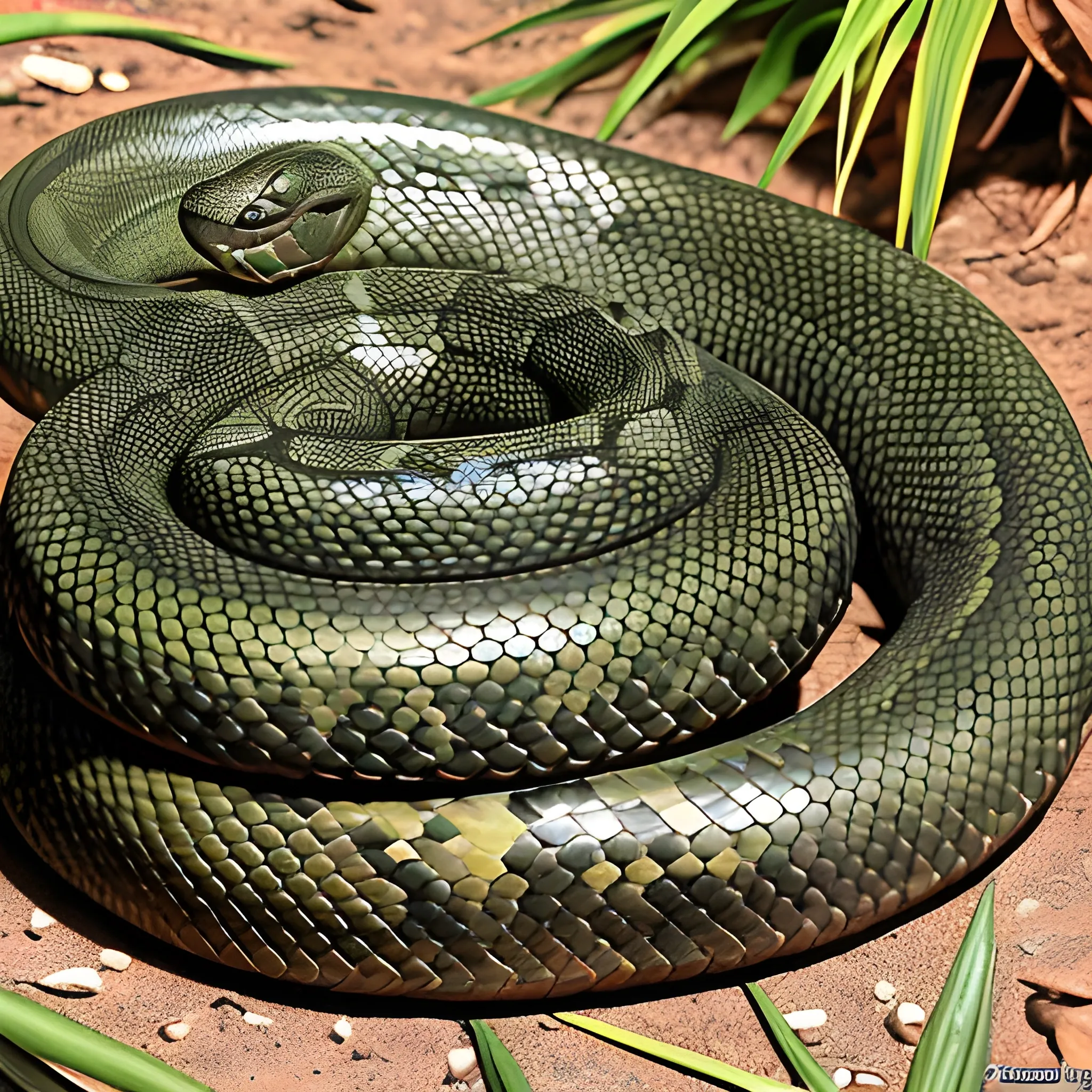
Appearance: The Constrictor Snake is a long and powerful reptile , known for its impressive ability to squeeze and suffocate its prey. It typically has a slender and muscular body , covered in scales that can vary in color from dull brown and green to vibrant patterns. Constrictor snakes have sharp , recurved teeth designed to grip and hold their prey as they constrict it. They are typically non-venomous and rely on their powerful constriction to subdue their victims. Features: The Constrictor Snake is a stealthy predator , relying on its keen senses to locate prey and ambush it. Its long , forked tongue allows it to taste the air and track potential food sources. Once it catches its prey , the snake coils around it , using its powerful muscles to squeeze and immobilize it. This method of hunting allows the snake to subdue prey larger than its mouth , as it doesn't need to swallow the victim whole. Habitat: Constrictor Snakes are found in a wide range of environments , from dense jungles and swamps to arid deserts and grasslands. They prefer warm climates and can be active both during the day and at night. In your DND world , they might inhabit untamed wilderness areas or hidden lairs , waiting for prey to pass by. Behavior: Constrictor snakes are generally solitary creatures , except during mating season. They are non-aggressive toward larger creatures , preferring to avoid confrontation when possible. When hunting , they rely on stealth and patience to surprise their prey. Their constriction technique is highly effective , allowing them to overpower and devour a variety of creatures. Role in the World: In your DND world , Constrictor Snakes could be a common predator in certain regions , often preying on small to medium-sized creatures. Druids and rangers might have a connection with these snakes , viewing them as symbols of balance in the natural world. Encountering a Constrictor Snake in the wild could be a challenging and potentially dangerous situation for adventurers. While they are not typically aggressive toward larger creatures , they may perceive humanoids as potential threats if they feel cornered or provoked. Players might need to exercise caution and use appropriate skills , such as animal handling or survival , to safely navigate through areas where these snakes are known to dwell. If adventurers find themselves facing a Constrictor Snake , they must be prepared for a battle of strength and wits , as the snake's constricting abilities can be deadly if not dealt with carefully. ,

Appearance: The Constrictor Snake is a long and powerful reptile , known for its impressive ability to squeeze and suffocate its prey. It typically has a slender and muscular body , covered in scales that can vary in color from dull brown and green to vibrant patterns. Constrictor snakes have sharp , recurved teeth designed to grip and hold their prey as they constrict it. They are typically non-venomous and rely on their powerful constriction to subdue their victims. Features: The Constrictor Snake is a stealthy predator , relying on its keen senses to locate prey and ambush it. Its long , forked tongue allows it to taste the air and track potential food sources. Once it catches its prey , the snake coils around it , using its powerful muscles to squeeze and immobilize it. This method of hunting allows the snake to subdue prey larger than its mouth , as it doesn't need to swallow the victim whole. Habitat: Constrictor Snakes are found in a wide range of environments , from dense jungles and swamps to arid deserts and grasslands. They prefer warm climates and can be active both during the day and at night. In your DND world , they might inhabit untamed wilderness areas or hidden lairs , waiting for prey to pass by. Behavior: Constrictor snakes are generally solitary creatures , except during mating season. They are non-aggressive toward larger creatures , preferring to avoid confrontation when possible. When hunting , they rely on stealth and patience to surprise their prey. Their constriction technique is highly effective , allowing them to overpower and devour a variety of creatures. Role in the World: In your DND world , Constrictor Snakes could be a common predator in certain regions , often preying on small to medium-sized creatures. Druids and rangers might have a connection with these snakes , viewing them as symbols of balance in the natural world. Encountering a Constrictor Snake in the wild could be a challenging and potentially dangerous situation for adventurers. While they are not typically aggressive toward larger creatures , they may perceive humanoids as potential threats if they feel cornered or provoked. Players might need to exercise caution and use appropriate skills , such as animal handling or survival , to safely navigate through areas where these snakes are known to dwell. If adventurers find themselves facing a Constrictor Snake , they must be prepared for a battle of strength and wits , as the snake's constricting abilities can be deadly if not dealt with carefully. ,

Appearance: The Constrictor Snake is a long and powerful reptile , known for its impressive ability to squeeze and suffocate its prey. It typically has a slender and muscular body , covered in scales that can vary in color from dull brown and green to vibrant patterns. Constrictor snakes have sharp , recurved teeth designed to grip and hold their prey as they constrict it. They are typically non-venomous and rely on their powerful constriction to subdue their victims. Features: The Constrictor Snake is a stealthy predator , relying on its keen senses to locate prey and ambush it. Its long , forked tongue allows it to taste the air and track potential food sources. Once it catches its prey , the snake coils around it , using its powerful muscles to squeeze and immobilize it. This method of hunting allows the snake to subdue prey larger than its mouth , as it doesn't need to swallow the victim whole. Habitat: Constrictor Snakes are found in a wide range of environments , from dense jungles and swamps to arid deserts and grasslands. They prefer warm climates and can be active both during the day and at night. In your DND world , they might inhabit untamed wilderness areas or hidden lairs , waiting for prey to pass by. Behavior: Constrictor snakes are generally solitary creatures , except during mating season. They are non-aggressive toward larger creatures , preferring to avoid confrontation when possible. When hunting , they rely on stealth and patience to surprise their prey. Their constriction technique is highly effective , allowing them to overpower and devour a variety of creatures. Role in the World: In your DND world , Constrictor Snakes could be a common predator in certain regions , often preying on small to medium-sized creatures. Druids and rangers might have a connection with these snakes , viewing them as symbols of balance in the natural world. Encountering a Constrictor Snake in the wild could be a challenging and potentially dangerous situation for adventurers. While they are not typically aggressive toward larger creatures , they may perceive humanoids as potential threats if they feel cornered or provoked. Players might need to exercise caution and use appropriate skills , such as animal handling or survival , to safely navigate through areas where these snakes are known to dwell. If adventurers find themselves facing a Constrictor Snake , they must be prepared for a battle of strength and wits , as the snake's constricting abilities can be deadly if not dealt with carefully. ,

Central Icon: Use a central design representing a mountain with a coffee plantation at its base. This symbolizes the location in the Páramo of Santander and coffee production. Nature: Surround the mountain and coffee plantation with elements of the páramo's flora and fauna , such as birds , wildflowers , and typical vegetation. This highlights the richness of the region's biodiversity. Colors: Use a color palette that represents the region's nature and climate. Shades of green for vegetation and blue for the sky and bodies of water can be suitable. You can also incorporate brown and green tones to represent ripe coffee beans. Typography: Choose a rustic or artisanal-style font for your coffee's name. This evokes authenticity and craftsmanship in coffee production in the region. Text: Place your coffee's name and location , "Páramo de Santander , Colombia , " below or around the central icon. ,

Central Icon: Use a central design representing a mountain with a coffee plantation at its base. This symbolizes the location in the Páramo of Santander and coffee production. Nature: Surround the mountain and coffee plantation with elements of the páramo's flora and fauna , such as birds , wildflowers , and typical vegetation. This highlights the richness of the region's biodiversity. Colors: Use a color palette that represents the region's nature and climate. Shades of green for vegetation and blue for the sky and bodies of water can be suitable. You can also incorporate brown and green tones to represent ripe coffee beans. Typography: Choose a rustic or artisanal-style font for your coffee's name. This evokes authenticity and craftsmanship in coffee production in the region. Text: Place your coffee's name and location , "Páramo de Santander , Colombia , " below or around the central icon. Bag Background: Natural Background: Use an image or pattern that represents the beauty of the Páramo of Santander , such as a mountainous landscape , a panoramic view , or even a drawing of páramo vegetation. This adds authenticity and visual appeal to the bag. Colors: Keep the background color palette in harmony with the logo's colors to create a cohesive appearance. Product Information: Include details about the type of coffee , the cultivation and harvesting process , as well as flavor and aroma notes on the back of the bag. Remember that it's essential to work with a graphic designer or design agency to create an attractive and effective coffee bag. This design is just an initial suggestion and can be customized according to your preferences and your coffee's identity. Also , ensure that the bag complies with all legal and labeling requirements applicable to coffee sales in Colombia and other markets. ,
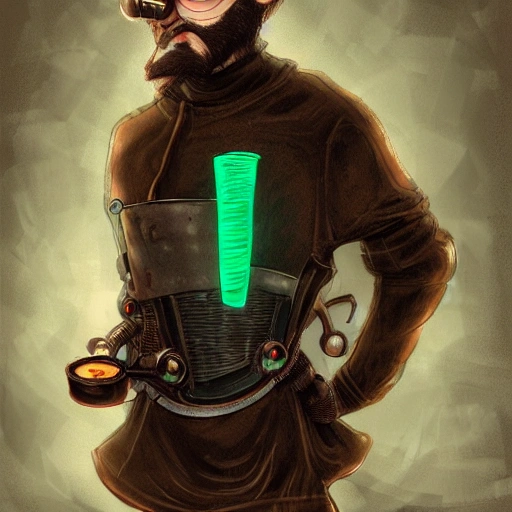
steampunk helmet fantasy art of a young man with curly black hair pulled back in a bun , brown and green eyes , short scruffy black beard , dressed in a black turtleneck jumper , ordering coffee in a coffee shop , in autumn , in a dystopian bladerunner future. digital painting artstation concept art. ,
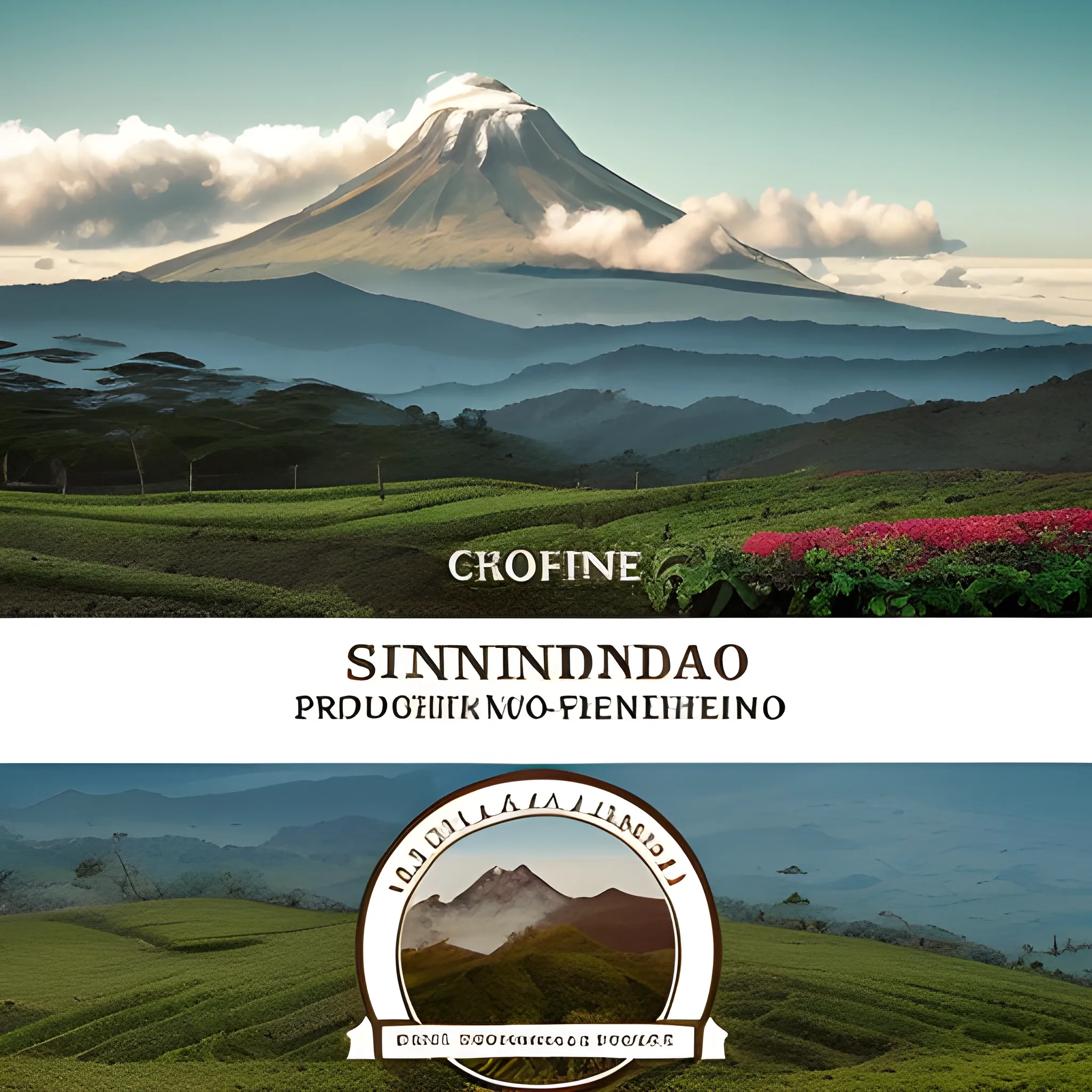
Designing a coffee bag from Páramo de Santander , Colombia , will require a logo and background that reflects the beauty and uniqueness of this region and its coffee. Here is a description of a possible design: Logo: Central icon: Use a central design that represents a mountain with a coffee plantation at its base. This symbolizes the location in the Páramo de Santander and the production of coffee. Nature: Surround the mountains and the coffee plantation with elements of the flora and fauna of the moor , such as birds , wild flowers and typical vegetation. This highlights the rich biodiversity of the region. Colors: Use a color palette that represents the nature and climate of the region. Shades of green for vegetation and blue for the sky and bodies of water may be appropriate. You can also incorporate brown and green tones to represent ripe coffee beans. Typography: Choose a rustic or artisan style font for your cafe's name. This evokes authenticity and craftsmanship in coffee production in the region.Tex ,
